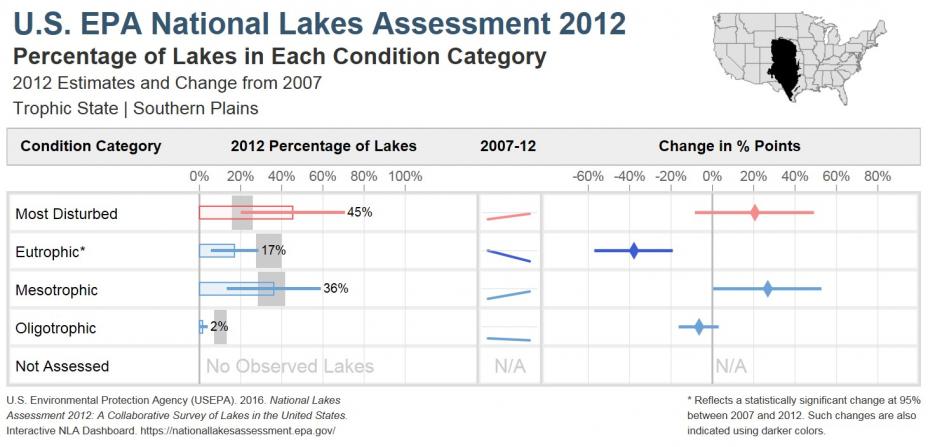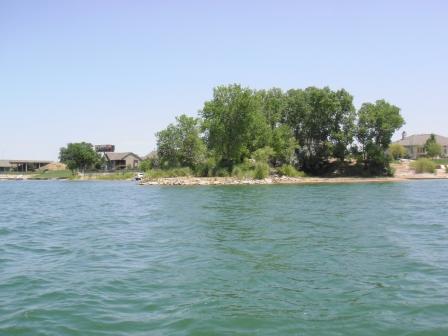Southern Plains Ecoregion - National Lakes Assessment 2012 Results
Key Results
A total of 7,734 lakes in the Southern Plains ecoregion are represented in the National Lakes Assessment (NLA). Of these lakes, about 10% are natural and 90% are man-made.
The NLA uses trophic state as an important indicator of lake condition and assesses the extent of key stressors in the nation’s lakes.
- In the Southern Plains, 45% of lakes are rated as most disturbed based on trophic state, 17% are eutrophic, 36% are mesotrophic, and 2% are oligotrophic.
- The most widespread stressors assessed are nitrogen (61% of lakes), phosphorus (58%), and lake habitat complexity (31%).
Trophic State

Indicator with the Highest Percentage of Lakes in the Most Disturbed Condition: Nitrogen

 NLA 2012 sampling in Blue Lake, Kansas.
NLA 2012 sampling in Blue Lake, Kansas.
Human Use Condition
Cyanobacteria is one of three algal toxin related indicators presented in the NLA (see also chlorophyll a and microcystins). It serves as a proxy for the presence of algal toxins.
- Based on cyanobacteria cell counts, 19% of lakes in the Southern Plains are in the most disturbed condition (i.e., pose a high risk of exposure to algal toxins).
Change from 2007 (for lakes >4 hectares)*
- For the Southern Plains, the NLA reports a 34% increase in the proportion of lakes in most disturbed condition between 2007 and 2012 based on the condition of chlorophyll a risk.
To access more indicator graphics please visit the interactive NLA Dashboard.
* The change analysis is based on information from two points in time – 2007 and 2012. The change in condition analysis only considers lakes 4 hectares and larger because smaller lakes were not sampled in 2007.
